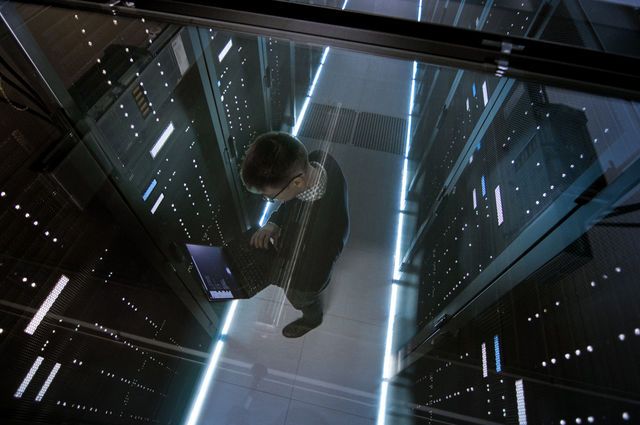Solving Labor Shortage Through Technology
14 experts shared their view
With travel demand accelerating rapidly, the hospitality industry is experiencing a new challenge: labor shortages resulting in sharply rising labor cost, which consumes as much as 60%-80% of RevPAR (CBRE). In the U.S. alone, hotels need to hire 600,000 more employees by summer to be able to meet demand (BIS.gov). Right now there are 171,800 open positions on LinkedIn for hospitality jobs in the U.S.
Wages in hospitality operations - frontline position such as housekeeping, front desk, wait staff, line cooks, etc. - are up more than 20% since April 2020 (Hotel Effectiveness). Hotels and restaurants alike are offering sign-up bonuses, higher wages and even cash payments to candidates just to come for an interview. In the same time productivity is down due to influx of inexperienced staff, since many of the experienced hospitality professionals left the industry due to furloughs and layoffs during the pandemic.
The question is, how can the hospitality industry solve the current labor shortages and unsustainable labor cost through technology innovations, automation, mobility, robotization and next gen technology applications?
With the prevalence of travel-hungry and tech-savvy millennials combined with the challenges from the pandemic, labour shortages have come to the forefront of concerns for hospitality organisations. However, adopting the right technology solutions can provide effective solutions to labour-related issues. In order to address this issue, there are three focal points for hospitality organisations when adopting technology;
1) Simplified operations through intuitive UX
Legacy systems may carry a sense of familiarity. However, these systems require intensive training for those new to the field. Hence, the focus should be on adopting next-gen solutions with simple operations and intuitive UX designs which do not require specialised certifications or intense training. This will allow hotels to bring in employees from other service industries, prioritising customer service as a hiring criterion. This will open up a new channel for acquiring labour while eliminating the high labour cost from trained legacy system operators.
Also, focussing on solutions that span across the organisation's operations will allow one employee to manage multiple tasks. For instance, an integrated solution will allow the front desk agent to manage guest requests as well. Solutions like FX, which focus on service effectiveness with guest request-managing features built into the front-office platform, can enable optimum labour efficiency. Research suggests that cross-trained operations can reduce labour need by 15% and reduce hourly costs by more than 9%. Best-of-breed systems, on the other hand, require the staff to learn multiple systems in order to manage additional tasks, making cross-training and multitasking difficult, if not impossible.
2) Self-service tools for guests
DIY tools that accommodate B2B2C operations will allow some operations to be carried out by the guests themselves. The best example of this is the airline industry. Self-service technology in airports has paved the way for travellers to carry out almost all the operations, from booking tickets to printing luggage tickets and boarding passes, by themselves. The industry has experienced a significant increase in staff efficiency and a reduction in labour costs through this change.
According to a survey by Summit Research Associates, reducing costs (23%) and reducing staff (21%) were the two main reasons driving the adoption of self-service technology. After adoption, Forrester Research vice president Henry Harteveldt says that the cost of $3.02 to check-in a passenger with a service employee, reduced to 14¢ with self-service kiosks. The International Air Transport Association IATA estimates that on average self-service facilities save airlines US$2.50 per check-in, which adds up to US$1 billion in annual industry savings.
The hospitality industry can adopt the same process. Guests can be allowed to select their rooms, check-in, order food, request services without the need for extensive interactions with the staff. All-in-one solutions designed to be B2B2C can achieve this.
3) Mobile-first technology
Mobile technology enables the staff to carry out functions on the go, reducing unnecessary movement time. For example, it allows group check-ins while the guests are being picked up from the airport freeing the front desk staff. In addition, room service requesting through in-room tabs with mobile notifications for the staff and mobile food ordering systems eliminates the need to run back and forth between stations. In fact, technology can allow the guest to access an interactive menu and order food through their own device by simply scanning a QR code on their table. Research suggests that mobile application integration can save around 7.5 hours per employee, per week. These saved hours will then translate into reduced labour requirements and reduced costs in terms of salaries.
The world keeps evolving, with new generations following new trends flowing in constantly. Today, millennials make up more than 50% of your guests, and they represent 35% of the global workforce, with the numbers predicted to rise to 75% in 2025. So, it is time to leverage the hotel operations to accommodate this tech-driven generation effectively. This will only be possible if hospitality leaders are ready for a change. This change will be disrupting, but it will also bring in efficiency and profitability. Technology is ready; is the industry ready?



